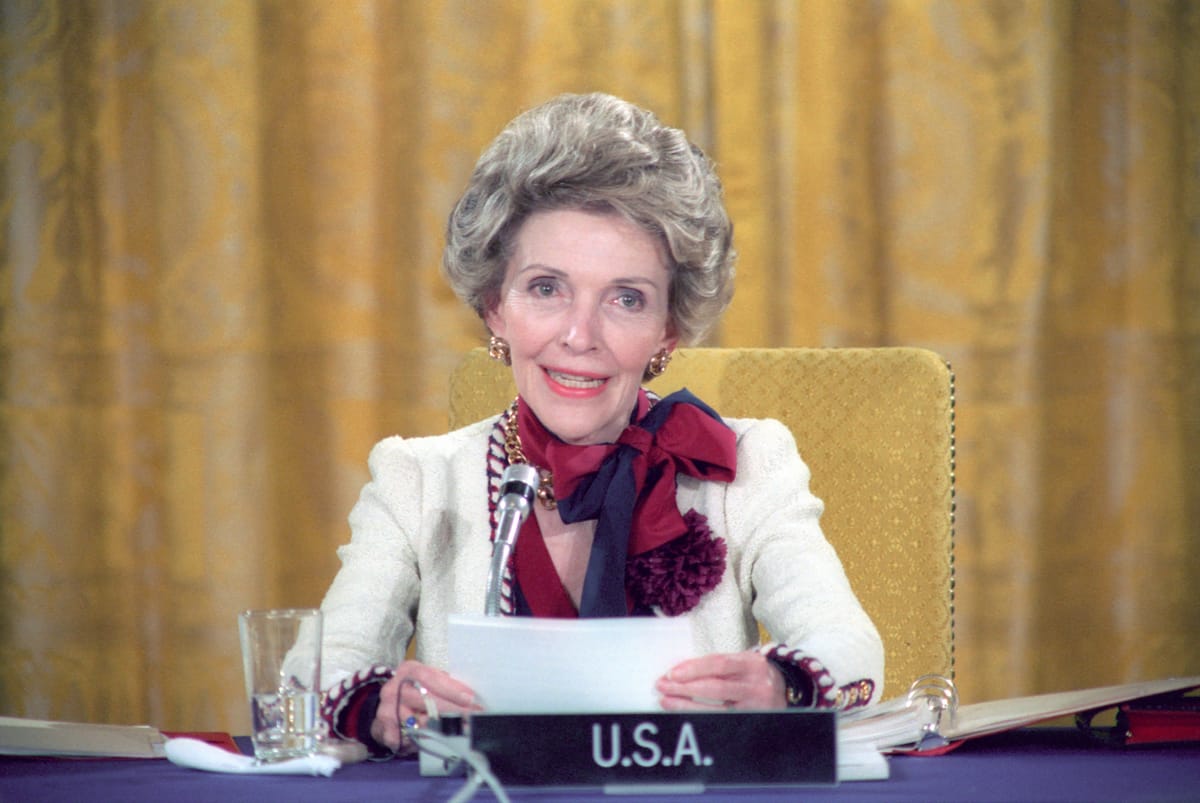

Nancy Reagan, a name synonymous with grace, strength, and unwavering devotion, left an indelible mark on American history. From her early life as an aspiring actress to her influential role as First Lady of the United States, Nancy Reagan's journey was one of transformation and dedication. This biography delves into the life of this remarkable woman, exploring her personal life, career, and lasting impact on the nation.
Early Life and Hollywood Dreams
Born Anne Frances Robbins on July 6, 1921, in New York City, Nancy's early life was marked by change. Her parents separated shortly after her birth, and she spent several years living with her maternal aunt and uncle in Maryland. In 1929, her mother, Edith Luckett, married Loyal Davis, a prominent Chicago neurosurgeon. This marked a turning point in Nancy's life, providing her with stability and a loving home. She was adopted by her stepfather and took his last name, becoming Nancy Davis.
Nancy attended the Girls' Latin School of Chicago, where she was described as an average student with a keen interest in drama. This passion led her to Smith College in Massachusetts, where she majored in English and drama, graduating in 1943. After a brief stint working as a sales clerk and a nurse's aide, Nancy pursued her dream of becoming an actress.
With the help of her mother's connections in the theater world, Nancy landed roles in touring companies and on Broadway. In 1949, she signed a contract with Metro-Goldwyn-Mayer (MGM) and moved to Hollywood. During her time in Hollywood, Nancy appeared in 11 films, including "The Next Voice You Hear..." (1950) and "Donovan's Brain" (1953). Although she never achieved major stardom, she was a working actress who gained valuable experience and established connections within the industry.
Marriage to Ronald Reagan
A pivotal moment in Nancy's life came in 1951 when she met Ronald Reagan, then president of the Screen Actors Guild (SAG). They were introduced by a mutual friend, and their connection was immediate. On March 4, 1952, they were married in a small ceremony at the Little Brown Church in the San Fernando Valley. Their marriage was a true partnership, characterized by deep love, mutual respect, and unwavering support.
The Reagans had two children together: Patricia Ann (Patti) and Ronald Prescott (Ron). Nancy also became stepmother to Maureen and Michael, Ronald's children from his previous marriage to actress Jane Wyman. Family was always a priority for Nancy, although she sometimes faced challenges in her relationships with her children, particularly Patti, who held differing political views.
First Lady of California
Ronald Reagan's political career took off in the 1960s, and Nancy was by his side every step of the way. When he was elected Governor of California in 1966, Nancy became First Lady of the state. In this role, she focused on supporting her husband and promoting various charitable causes. She also developed a keen understanding of the political landscape and honed her skills as a communicator and advocate.
Nancy's time as First Lady of California provided her with valuable experience that would serve her well in her future role as First Lady of the United States. She learned how to navigate the public eye, manage her image, and use her platform to promote causes she cared about.
First Lady of the United States
In 1981, Ronald Reagan was inaugurated as the 40th President of the United States, and Nancy Reagan became First Lady of the nation. During her eight years in the White House, she played a significant role in shaping the administration's agenda and image.
One of Nancy's most notable initiatives was her "Just Say No" campaign, which aimed to raise awareness about the dangers of drug abuse among young people. She traveled extensively across the country, visiting schools and community centers, delivering speeches, and meeting with young people. Her passionate advocacy helped to bring national attention to the issue of drug abuse and encouraged young people to make healthy choices.
Beyond her public initiatives, Nancy was also a trusted advisor to her husband. She had a keen political sense and often provided him with insights and advice on policy matters. Her influence within the White House was significant, although she often preferred to work behind the scenes.
Nancy's time as First Lady was not without controversy. She was sometimes criticized for her expensive taste in clothing and her reliance on astrology. However, she remained steadfast in her support for her husband and her commitment to her causes.
Later Life and Legacy
After leaving the White House in 1989, the Reagans retired to their home in Bel Air, California. In 1994, Ronald Reagan announced that he had been diagnosed with Alzheimer's disease. Nancy became his devoted caregiver, advocating for increased research funding and raising awareness about the disease.
Ronald Reagan passed away in 2004, and Nancy continued to be a prominent figure in American life. She remained active in philanthropic endeavors and continued to speak out about issues she cared about, particularly stem cell research.
Nancy Reagan passed away on March 6, 2016, at the age of 94. Her legacy is one of unwavering devotion to her husband, passionate advocacy for important causes, and a significant impact on American history. She will be remembered as a strong and influential First Lady who left a lasting mark on the nation.
In Summary
Nancy Reagan's life was a remarkable journey, from her early days as an aspiring actress to her influential role as First Lady of the United States. She was a woman of grace, strength, and unwavering devotion, who left an indelible mark on American history. Her legacy continues to inspire and her contributions to the nation will not be forgotten.
Dues are $12 per year. Member benefits:
✅ Ad-Free Website Viewing
✅ Advocacy for Republican Seniors
✅ 120+ Senior Discounts
✅ Member Only Newsletters